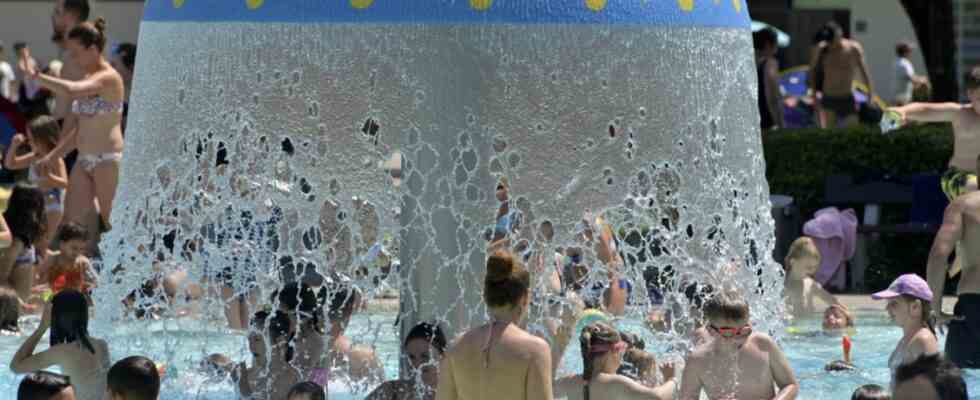When the sun burns red-hot from the sky, people long to cool off. If it can’t be icy enough, you can jump into the Isar, which is currently 16 degrees cold. Especially with children in their luggage, however, many make their way to the nearest swimming pool, where the pools are heated to 26 to 28 degrees. But now the country is threatened with an energy shortage because of the war in Ukraine, the prices for oil and gas are skyrocketing and local authorities are being challenged to step up their efforts to protect the climate. Three reasons for following the recommendation of the German Society for Bathing (DGfdB) to lower the water temperatures in indoor and outdoor pools by two degrees. The municipality of Ottobrunn was the first municipality in the district of Munich to take this to heart at the beginning of May and corrected the room and water temperatures in the Phönixbad downwards. This Thursday, June 23, the energy and climate protection committee of the municipal council in Unterhaching is debating lower bathing temperatures in the outdoor pool, and in Oberschleißheim people are at least thinking about saving energy in municipal operations, including the indoor pool.
The considerations in Unterhaching to follow the Ottobrunn model are remarkable in that the water in the outdoor pool is heated with geothermal energy and lowering the temperature would neither reduce CO₂ emissions nor save costs, which is why other geothermal communities such as Pullach, Grünwald and Unterschleißheim see no reason to let the water cool down in their bathing establishments. “In fact, we simply don’t have this problem,” says Andreas Most, Chairman of the Supervisory Board of the Pullach Geothermal Society IEP. For Wolfgang Geisinger, the managing director of Geothermie Unterhaching, these considerations should be seen more as a general appeal to save energy. It’s all about climate protection. “You could implement that in a timely manner,” says the head of the sports department, Michael Trautwein. So far, the water temperatures in the five pools in the Unterhachinger outdoor pool have been between 24.5 degrees (swimming pool) and 31.5 degrees (warm water pool).
Swimming champion Sante Ciavarella covers the pools in the Haarer outdoor pool overnight so that the water does not cool down too much.
(Photo: Claus Schunk)
Pool manager Sante Ciavarella relies on the power of the sun for the two indoor pools and the outdoor pool in the municipality of Haar. He has lowered the water temperature generated with gas from 24 degrees in the previous year to 23 degrees, which is in the interests of climate protection, but the water is heated to 27 to 28 degrees using solar absorbers that are built into the water circuit of the pools and can be switched on if necessary degrees, in the outdoor pools to 30 to 32 degrees. “And in the evening after the pool is closed, the pools are covered. Then the heat loss is lower overnight,” says Ciavarella.
Two degrees less can already save 25 percent of the costs
In the Oberschleißheim indoor pool, bathers will find water at 29 degrees, on warm bathing day on Wednesday it is 32 degrees. The municipality is now talking about saving energy in all municipal facilities, including in the bathing area, according to the treasury. But nothing is over yet. A calculation by the DGfdB, according to which lowering the pool water temperature from the usual 26 to 28 degrees by two degrees, can reduce total energy consumption by up to 25 percent can be an incentive for Oberschleißheim and for all municipalities with fossil heat generation.
“Small twist, big effect” – under this title Stefanie Nytsch, spokeswoman for the Ottobrunner Phönixbad, announced the lowered temperatures in all pools at the beginning of the season. “In view of the energy crisis, we now have to keep a cool head and hope that our guests will support us with their understanding,” says operations manager Sebastian Weber, justifying the reduction in water temperatures in all pools by 0.5 to two degrees, in the “Arielle” teaching pool even around 3.5 degrees. Most visitors didn’t even notice the difference, says Stefanie Nytsch today, only two older women suffering from rheumatism were 31 degrees too cool for exercises in the “Arielle”. “We’re all in the same boat and have to make sure that the energy stores are full in winter,” she says.

